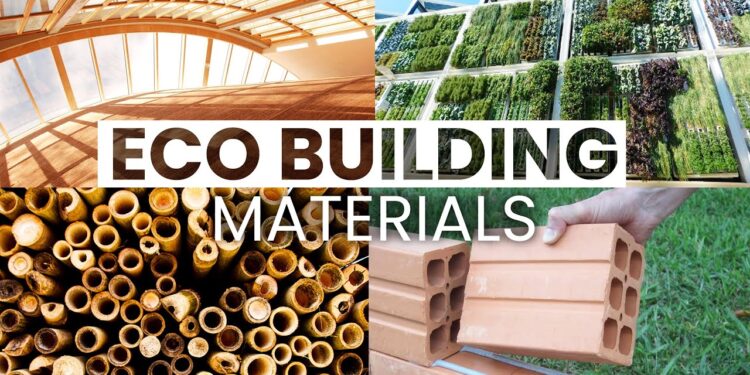Exploring the realm of Eco-friendly building tools for sustainable homes opens up a world of possibilities for environmentally conscious construction. Let's delve into the innovative solutions and practices that pave the way towards a greener future for home building.
Eco-friendly building materials
Using eco-friendly building materials is essential in creating sustainable homes that have a lower impact on the environment. These materials not only reduce carbon footprint but also promote healthier indoor air quality for the inhabitants. Let's explore some of the top eco-friendly building materials suitable for sustainable homes and their benefits.
1. Bamboo
Bamboo is a rapidly renewable resource that can be harvested in just a few years compared to traditional hardwood trees that take decades to mature. It is durable, lightweight, and has a high tensile strength, making it an excellent choice for flooring, furniture, and even structural elements in a sustainable home.
2. Recycled Glass
Recycled glass is an eco-friendly alternative to traditional glass materials. It can be used for countertops, tiles, and decorative elements in the home. By using recycled glass, you are diverting waste from landfills and reducing the energy required to produce new glass products.
3. Cork
Cork is a sustainable material harvested from the bark of cork oak trees. It is fire-resistant, waterproof, and provides excellent insulation properties, making it ideal for flooring, wall coverings, and even roofing materials in sustainable homes.
4. Hempcrete
Hempcrete is a bio-composite material made from hemp fibers, lime, and water. It is lightweight, breathable, and has excellent thermal properties, making it a great alternative to traditional concrete for insulating walls and ceilings in sustainable homes.
5. Reclaimed Wood
Reclaimed wood refers to wood salvaged from old buildings, barns, or other structures that are no longer in use. Using reclaimed wood not only adds character and uniqueness to a home but also helps reduce deforestation and waste. It can be used for flooring, furniture, and decorative accents in sustainable homes.By incorporating these eco-friendly building materials into construction projects, homeowners can reduce their environmental impact, improve energy efficiency, and create healthier living spaces.
While the initial cost of some eco-friendly materials may be higher than traditional options, the long-term benefits in terms of sustainability and durability often outweigh the upfront expenses.
Energy-efficient tools and technologies
Energy-efficient tools play a crucial role in promoting sustainability in home construction by reducing energy consumption, minimizing environmental impact, and lowering utility costs.
LED Lighting
One example of energy-efficient technology that can be incorporated into sustainable homes is LED lighting. LED bulbs consume significantly less energy than traditional incandescent bulbs, leading to lower electricity usage and reduced carbon emissions.
Solar Panels
Another energy-efficient technology for sustainable homes is solar panels. Solar panels harness the power of the sun to generate electricity, reducing reliance on non-renewable energy sources and decreasing electricity bills in the long run.
Smart Thermostats
Smart thermostats are also valuable energy-efficient tools for sustainable homes. These devices optimize heating and cooling systems based on occupancy and temperature settings, resulting in reduced energy waste and cost savings over time
.
Waste reduction strategies
Construction waste can have a significant environmental impact, but by implementing waste reduction strategies, builders can minimize their footprint and contribute to sustainable practices. Repurposing or recycling waste generated during the construction process is crucial in achieving this goal.
Source separation for recycling
One effective strategy to reduce construction waste is by implementing source separation for recycling. This involves sorting materials like wood, metal, and concrete on-site to facilitate recycling processes. By separating waste at the source, builders can ensure that recyclable materials are diverted from landfills, reducing the overall environmental impact of construction projects.
Reuse of materials
Another innovative way to reduce waste in sustainable home building is by reusing materials whenever possible. Salvaging items like doors, windows, or fixtures from demolition sites or repurposing leftover materials from previous projects can not only minimize waste but also add unique character to the home.
By incorporating reused materials, builders can reduce the demand for new resources and promote a circular economy within the construction industry.
Composting organic waste
In addition to recycling and reusing materials, composting organic waste generated during construction can further reduce environmental impact. By composting wood scraps, sawdust, or other organic materials, builders can divert waste from landfills and create nutrient-rich soil for landscaping or gardening purposes.
This sustainable practice not only reduces waste but also promotes soil health and biodiversity in the surrounding environment.
Optimizing material usage
Optimizing material usage is another key strategy to minimize construction waste. By carefully planning and accurately measuring materials needed for a project, builders can reduce excess waste generated during construction. Utilizing prefabricated components or modular construction techniques can also help minimize material waste by reducing cutting and trimming on-site.
Water conservation methods
Implementing water-saving techniques in the construction of eco-friendly homes is crucial for reducing water consumption and promoting sustainability. By incorporating various water conservation methods, homeowners can contribute to environmental preservation and lower their utility bills.
Benefits of rainwater harvesting systems
Rainwater harvesting systems are an excellent way to collect and store rainwater for later use in sustainable homes. By capturing rainwater from rooftops and directing it to storage tanks, homeowners can reduce their reliance on municipal water sources. This not only helps in conserving water but also reduces the demand on public water supply systems during dry seasons or droughts.
Additionally, using harvested rainwater for activities like watering plants or flushing toilets can lead to significant cost savings on water bills.
Importance of water-efficient fixtures and appliances
Integrating water-efficient fixtures and appliances in sustainable home design is essential for minimizing water wastage. Low-flow toilets, aerated faucets, and water-saving showerheads are examples of fixtures that can help reduce water consumption without compromising performance. Energy-efficient dishwashers and washing machines also play a significant role in conserving water by using less water per cycle.
By investing in these water-efficient solutions, homeowners can not only contribute to water conservation efforts but also enjoy long-term savings on their water bills.
Last Word
In conclusion, Eco-friendly building tools offer a promising path towards sustainable and eco-conscious construction practices. By embracing these tools and technologies, we can create homes that not only benefit the environment but also provide long-term savings and efficiency.
Question Bank
What are some benefits of using eco-friendly building materials?
Using eco-friendly building materials can reduce environmental impact, improve indoor air quality, and enhance energy efficiency in homes.
How do energy-efficient tools contribute to sustainability in home construction?
Energy-efficient tools help reduce energy consumption, lower utility bills, and minimize the carbon footprint of a home.
What are some innovative ways to repurpose construction waste?
Construction waste can be repurposed into materials like recycled aggregates, bricks, or insulation, promoting a circular economy.
How can rainwater harvesting systems benefit sustainable homes?
Rainwater harvesting systems can reduce reliance on municipal water supply, conserve water resources, and lower water bills for homeowners.
Why is it important to integrate water-efficient fixtures in sustainable home design?
Water-efficient fixtures help reduce water wastage, promote responsible water usage, and contribute to overall sustainability efforts in home construction.







